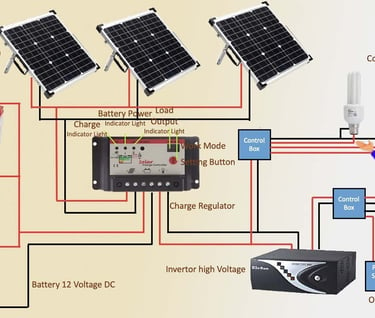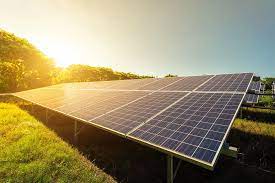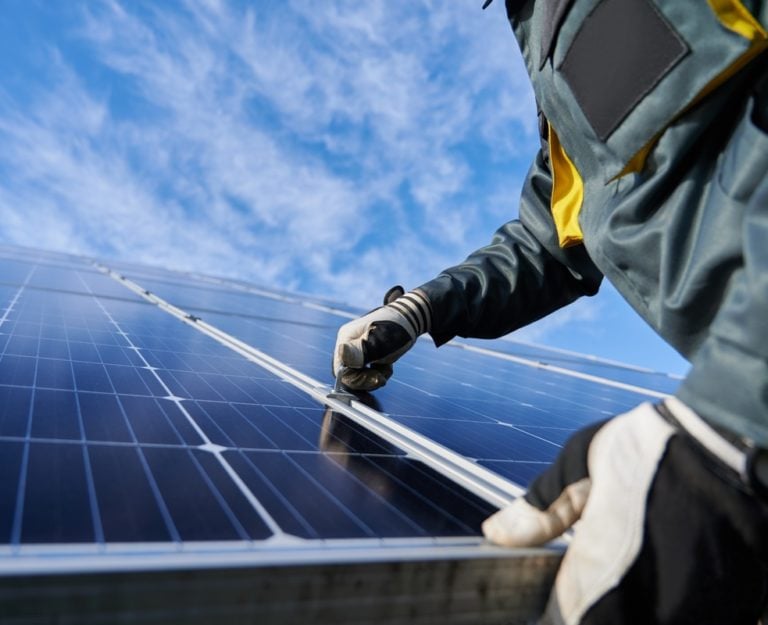Photovoltaic (PV) Panels: The Future of Clean Energy
Photovoltaic (PV) panels are devices that convert sunlight into electricity. They are made up of solar cells, which are made of semiconductor materials like silicon. When sunlight hits a solar cell, it knocks electrons loose from their atoms. These electrons flow through the solar cell, creating an electric current.


Photovoltaic (PV) Panels: The Future of Clean Energy
Photovoltaic (PV) panels are devices that convert sunlight into electricity. They are made up of solar cells, which are made of semiconductor materials like silicon. When sunlight hits a solar cell, it knocks electrons loose from their atoms. These electrons flow through the solar cell, creating an electric current.
PV panels are a clean, renewable source of energy. They do not produce any emissions, so they are not harmful to the environment. PV panels also have a long lifespan, so they can provide clean energy for many years.
In recent years, the cost of PV panels has come down dramatically. This has made PV panels more affordable for homeowners and businesses. As a result, the demand for PV panels has been growing rapidly.
How Do PV Panels Work?
The basic principle behind PV panels is the photovoltaic effect. This effect was discovered in 1839 by French physicist Alexandre-Edmond Becquerel. Becquerel found that when sunlight hit a semiconductor material, it created an electric current.
The semiconductor material in a PV panel is typically silicon. Silicon is a very abundant element, so it is relatively inexpensive to use. Silicon is also a very stable material, so it can withstand the harsh conditions of outdoor use.
A PV panel is made up of many solar cells. Each solar cell is a small semiconductor device that converts sunlight into electricity. The solar cells in a PV panel are connected together in series to create a larger current.
The amount of electricity that a PV panel can produce depends on the size of the panel, the amount of sunlight that it receives, and the efficiency of the solar cells.
The Benefits of PV Panels
There are many benefits to using PV panels. Some of the benefits include:
Clean energy: PV panels do not produce any emissions, so they are a clean source of energy.
Renewable energy: PV panels are a renewable source of energy, so they will never run out.
Affordable: The cost of PV panels has come down dramatically in recent years.
Long lifespan: PV panels have a long lifespan, so they can provide clean energy for many years.
The Future of PV Panels
The future of PV panels is very bright. The demand for PV panels is growing rapidly, and the cost of PV panels is continuing to come down. As a result, PV panels are becoming more and more affordable for homeowners and businesses.
In the future, PV panels are likely to play a major role in the global energy mix. They are a clean, renewable source of energy that can help to reduce our reliance on fossil fuels.
How to Choose PV Panels
There are a few things to keep in mind when choosing PV panels. These include:
The size of the panel: The size of the panel will determine how much electricity it can produce.
The amount of sunlight: The amount of sunlight that the panel receives will affect its output.
The efficiency of the solar cells: The efficiency of the solar cells will determine how much electricity the panel produces per square foot.
The warranty: The warranty will protect you if the panel fails.
Conclusion
PV panels are a clean, renewable source of energy that can help to reduce our reliance on fossil fuels. They are becoming more and more affordable, and they are likely to play a major role in the global energy mix in the future.
If you are considering installing PV panels, be sure to do your research and choose a reputable dealer. With a little planning, you can enjoy the benefits of clean, renewable energy for many years to come.
Contact us for more information


Get in touch


